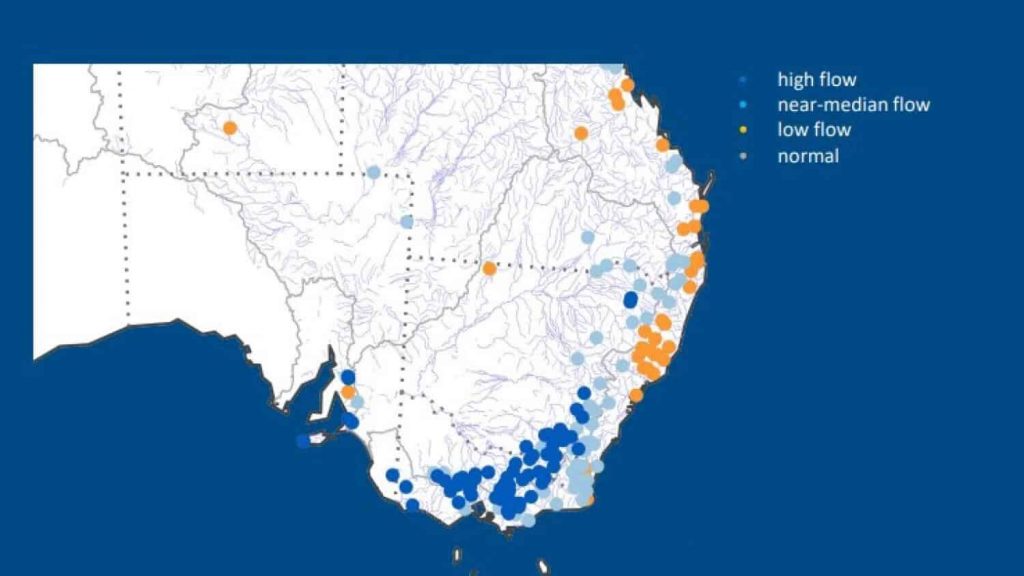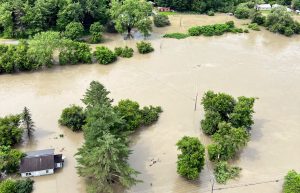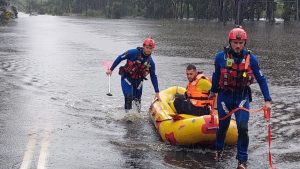
The Bureau of Meterology and Goulburn-Murray Water have released an update on current and forecast rainfall and river flow management strategies in the Goulburn catchment.
Greater Shepparton City Council director of community Louise Mitchell told an information webinar on Thursday, August 3 that the threat of flooding was reduced due to recent rainfall patterns and would be determined further by rainfall forecasts.
“The odds are lengthening now that the forecast dry weather has kicked in with the rain dropping away,” Ms Mitchell said.
“But we are not out of the woods yet. The variable that is most in play at the moment is the weather.”
BOM senior climatologist Jonathan Pollock said although some slight flooding was still occurring on the Murray River downstream from the Goulburn River and some short-term rain was forecast for this week, the outlook of a drier and warmer spring had reduced the chance of any further threats.
Victoria recorded its second wettest June on record this year, which was unexpected from prior forecasts, but had maximum temperatures typical of the month.
In contrast, July was the 11th driest on record with maximum temperatures above that month’s mean value.
Mr Pollock said the status of El Niño being at watch level limited forecasts but modelling in a number of countries showed similar patterns for future weather.
He said that despite the oceans currently having temperatures which suggested El Niño, the atmosphere had not responded and was still appearing as neutral.
The Indian Ocean Dipole (IOD) outlook was also incomplete and was expected to break down when monsoon troughs entered the southern hemisphere during summer.
“We haven’t seen much evidence of a positive Indian Ocean Dipole event in the sea ocean temperatures yet,” he said.
When both El Niño and a positive IOD occur, Victoria receives below average rainfall.
Mr Pollock said most of Victoria is expected to have an 80 per cent chance of receiving less that the median rainfall in August which corresponds with temperatures predicted to be higher than normal.
Most parts of the state could expect a warmer spring with both minimum and maximum temperatures expected to exceed their median values.
“We can expect unusually drier and warmer average conditions in the months ahead,” Mr Pollock said.
G-MW river operations manager Andrew Shields reported on the storage levels in Lake Eildon and said some of the June inflow had been collected.
Heavy rainfall on June 9 resulted in an inflow of 45,000 Ml in one day, with subsequent outflows from the dam diminishing as the rainfall weakened.
“June had three times the monthly average,” Mr Shields said.
“We are anticipating that the storage volume will increase through August so we can start to get ready to meet the downstream demands.”
G-MW sets storage filling targets, which vary from month to month in response to changing conditions.
“Recent dry weather has allowed the slowing of releases to take the pressure off those downstream who have been facing a few issues,” Mr Shields said.
In September, G-MW will collaborate with Goulburn Broken Catchment Management Authority to provide environmental water to the river system by releasing up to 150,000 Ml over a three-week period.
Mr Shields said fears of further significant rain events would be managed ahead of time before inflows increased.
“We continue to monitor those forecast catchment conditions.”
Goulburn Broken CMA has released a new intelligence portal which allows users to view flood maps, search properties and create a property flood report and flood information including estimated 100-year average recurrence flood levels.
Statutory planning and floodplain manager Guy Tierney outlined the functions of the portal to the webinar participants with a live online demonstration.
Residents in the catchment area can use the website to select their town and address to create a comprehensive flood report.
The portal can be accessed at: https://www.gbcma.vic.gov.au/our-region/waterway-floodplain-management/floodplain-planning/gbfloodintelligenceportal

























